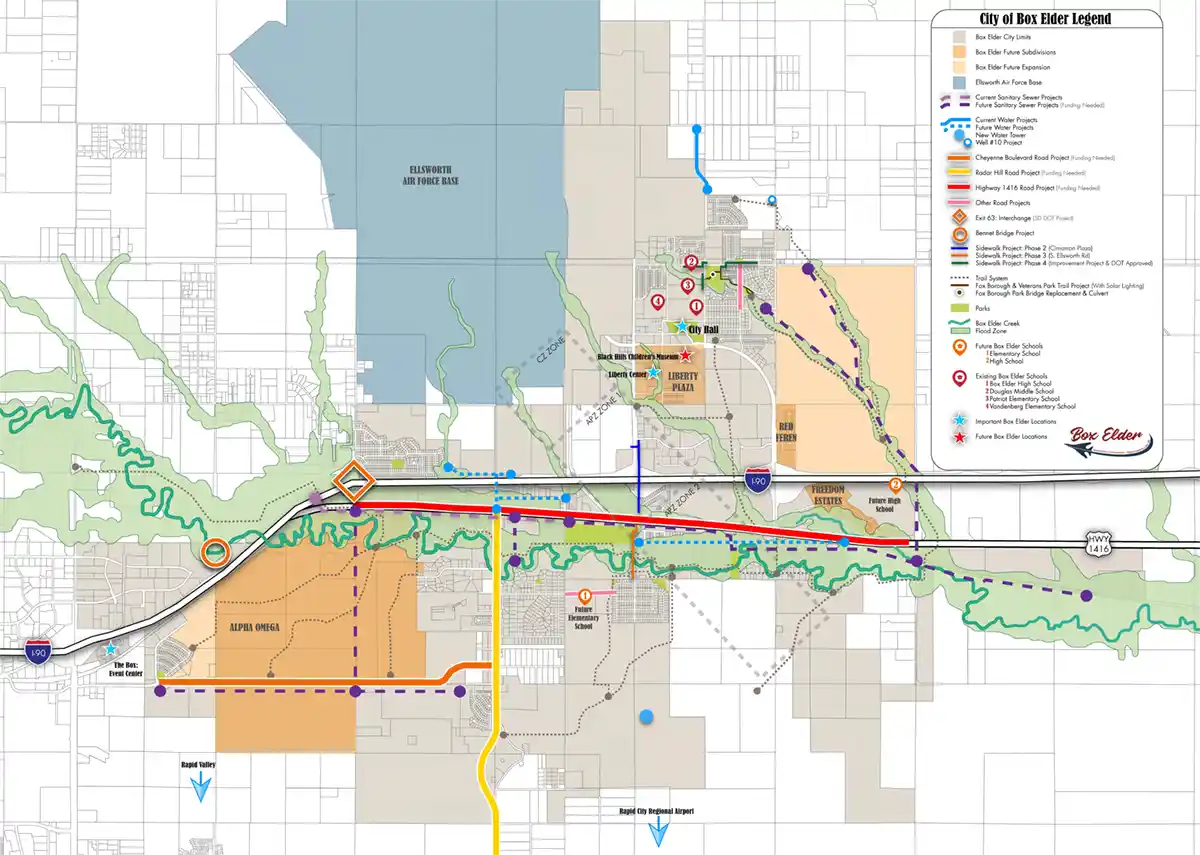City News and Updates on Capital Projects and Infrastructure

The City actively works to ensure its infrastructure is healthy, functional and meets the needs of our residents. In order to meet those needs, the city utilizes funding from many sources to maintain infrastructure. In an effort to keep you informed on capital improvement projects and their funding sources and how it affects you as a resident, the following information is being provided as a resource.
The City engaged AE2S Nexus to perform a comprehensive analysis of its infrastructure. Based on their findings, several capital improvement projects have been identified as high priority. These projects aim to address the depreciation and aging of the water and wastewater systems, ensuring long-term sustainability and reliability of the City's infrastructure.
The intention of completing these projects is to fortify the systems as well as ensuring the system is prepared for the anticipated population growth and planned developments in the city.
Brief Synopsis of "Water System Depreciation: A Capital Planning Tool for the Well-Managed Utility"
Infrastructure systems face increasing challenges due to rising capital costs, dwindling grant funding, climate impacts, and aging infrastructure. Proper management and financial planning are essential for sustainable operations. Depreciation, though a non-cash expense, is a crucial part of planning for reinvestment and maintaining system longevity.
It is important to understand the water and wastewater systems are Enterprise Funds, this means they operate similar to a business and are self funded by revenue from fees, not from tax dollars.
Depreciation spreads the cost of a capital asset over its useful life, making it easier to manage expenses and plan for future replacements. It can be used in two ways: recovering the initial investment or for setting aside funds for asset replacement. This analysis report developed by AE2 Nexus offers guidance on applying depreciation to enhance system renewal, capital planning, budget and funds for reserve management.
Key Sections:
- Part 1: Depreciation and Financial Reporting (Pages 4-12)
- Discusses different depreciation methods and their applications.
Depreciation is defined as:
"Depreciation is when the value of something goes down over time because it gets used or worn out. For example, if you buy a water pipe, it will last many years, but each year it becomes a little less valuable because it gets older and more used. In accounting, depreciation helps us spread the cost of that pipe over its useful life instead of counting it all at once when we buy it. This way, we can plan and save money to replace it when it wears out."
- Part 2: Depreciation and Practical System Management Considerations (Pages 13-21)
- Explores the financial versus managerial goals of depreciation.
- Emphasizes the importance of treating depreciation as a real expense.
- Offers strategies for using depreciation in capital reserve planning and rate setting.
- Part 3: Special Topics (Pages 22-30)
- Discusses handling donated or grant-funded capital.
- Explains life cycle cost analysis for better capital planning.
- Provides general reserve planning guidelines.
- Part 4: Conclusion and Capital Planning Roadmap (Pages 31-33)
- Summarizes the importance of using depreciation for financial reporting and managerial purposes.
- Reiterates the need for compliance with financial reporting requirements and full cost pricing for water rates.
The link to the below is for the comprehensive analysis report of Box Elder's water and wastewater systems
AE2S Nexus 2020 Report on the Sustainability and Health of the Box Elder Water/Wastewater System
For detailed charts and examples, see pages 6, 8, 18, 23, and 29. And a "Road Map" for planning starting on page 31.
Water and Wastewater Systems are operated through Enterprise Funds. "An enterprise fund is considered the best practice to promote and maintain long-term financial sustainability for water, sewer and storm water activities. An enterprise fund is a separate accounting and financial reporting mechanism for which revenues and expenditures are segregated into a fund with financial statements separate from all other governmental activities. An enterprise fund identifies the total direct and indirect costs to provide the service and the sources and amounts of revenues that support the service for which a fee is charged in exchange for service. Direct costs generally consist of personnel services, expenses and capital outlay, which are budgeted and accounted for in the enterprise fund. Indirect costs are expenditures budgeted and accounted for in the general fund on behalf of the enterprise fund, which are allocated to the enterprise fund for funding. Examples of indirect costs are central service department costs (accounting, treasury, collections, law and the like), insurances and fringe benefits that are not budgeted and accounted for in the enterprise fund."
An Enterprise Fund is like a special money fund for water, sewer, and storm water activities. It's the best way to keep track of all the money that comes in and goes out for these services. This money fund is separate from other city activities, making it easier to see exactly how much it costs to provide these services and where the money comes from.
There are two types of costs in this fund:
- Direct costs: These are the costs directly related to running the services, like paying workers and buying equipment.
- Indirect costs: These are the costs shared with other city activities, like accounting and insurance. The general fund covers these, but the enterprise fund pays back its share.
Keeping these costs separate ensures there's funding to keep services operating and running smoothly.
This means the water and wastewater systems are funded by end users, those of us who have access to running water and functioning sewer in our homes and businesses. Contrary to common belief these systems are not funded by tax dollars.
So, how do you fund upgrades or repairs to a system when there is not enough money in the account?
The Enterprise Fund can utilize creative funding such as grants, but often has to rely on special rate loans to fund these projects. Special rate loans are then paid back by spreading the cost across the system's end users in the form of surcharges.
Understanding how the water and wastewater systems are funded can make it easier to understand why there are surcharges.
Water and Wastewater Rate Analysis 2023
This report outlined and specifically addressed the rates. The system's rates have only had three adjustments going back nearly 40 years. Due to inflation and costs the rates were terribly inadequate in keeping the operations and maintenance needed moving forward. Again, the rates are not the same as the surcharges.
This will calculate the most recent adjustment from 2023-2024, it does not include any surcharge changes-simply the rates.


